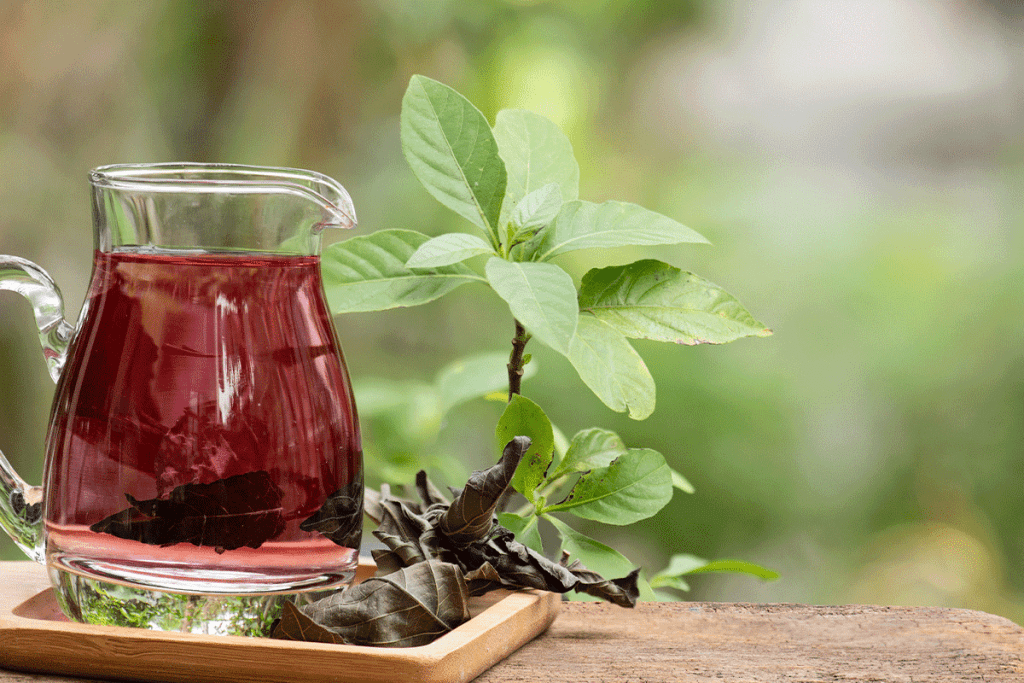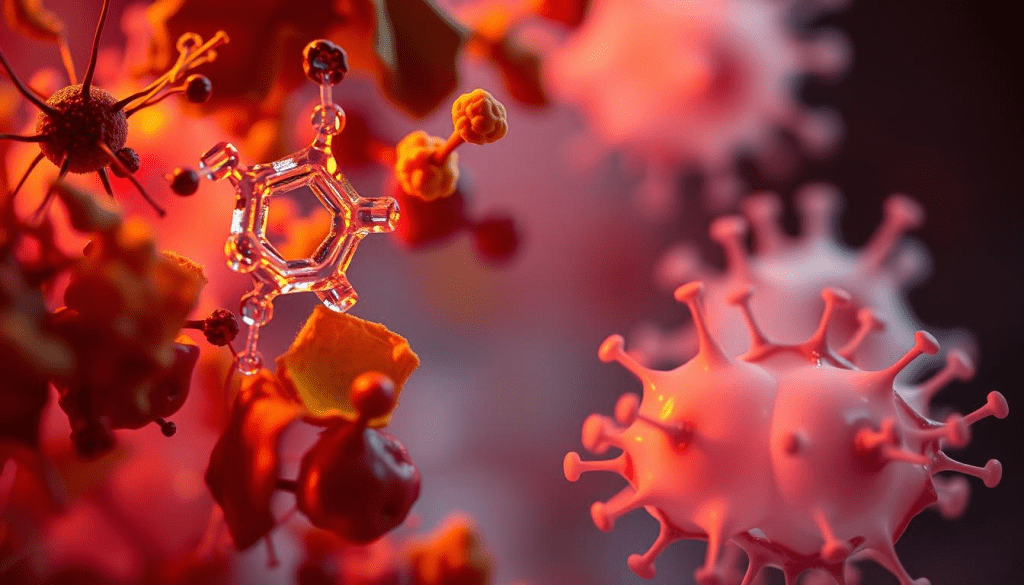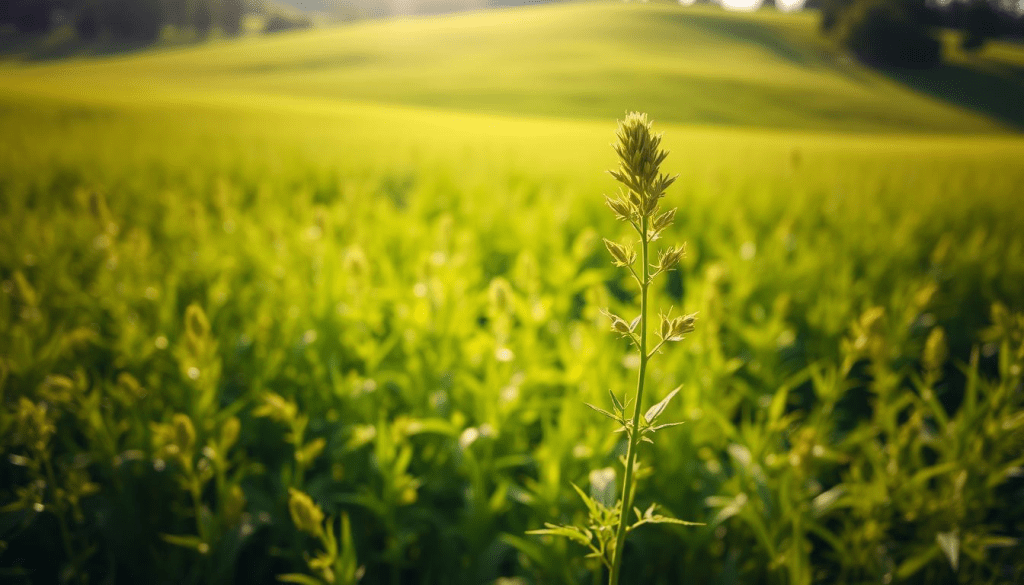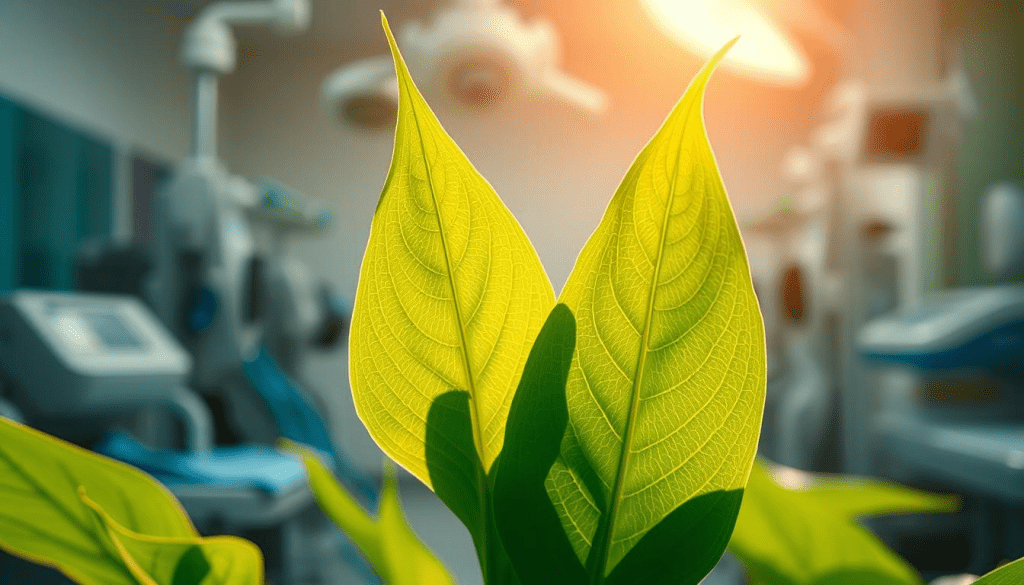Last Updated on November 12, 2025 by
We investigate the claims behind leukemia cures and natural treatments. Learn what science says about herbal remedies and alternative therapies for blood cancer.
Leukemia is a complex disease needing a detailed treatment plan. Recent studies show some herbs might help treat it. This offers new hope for therapy.
Medicinal plants like Artemisia annua, Moringa oleifera, and Vernonia amygdalina could be key. They have shown to kill leukemia cells and stop their growth. This makes them strong natural remedies for leukemia.

Scientists are studying these herbs and their compounds. They want to know how they work and their benefits in fighting leukemia.
Leukemia comes in many types and has tough treatment options. This has led to more research into natural and complementary therapies. It’s a blood cancer that starts in the bone marrow, with different subtypes and challenges.

There are four main types of leukemia: Acute Lymphoblastic Leukemia (ALL), Acute Myeloid Leukemia (AML), Chronic Lymphocytic Leukemia (CLL), and Chronic Myeloid Leukemia (CML). ALL mainly affects children, while AML is more common in adults. CLL and CML are seen in older adults, with CLL being the most common in this group.
Each type of leukemia has its own way of growing and responding to treatment. For example, ALL makes lots of immature lymphocytes quickly, needing fast treatment. CLL, on the other hand, grows slowly, allowing for different treatment options, like watching it closely in early stages.
Traditional leukemia treatments like chemotherapy, radiation, and stem cell transplants can have big side effects. This has led to more interest in complementary and alternative therapies that might help more and make life better.
“Adding complementary therapies to treatment can help with symptoms, lessen side effects, and boost overall well-being.”
Natural treatments and complementary approaches include changing diets, using herbal supplements, and mind-body therapies. Herbal supplements, like those with curcumin and green tea extracts, might have anti-leukemic effects. But, it’s key for patients to talk to their doctors before trying these therapies.
The search for natural treatments for leukemia is growing fast, with new research all the time. As we learn more about leukemia, combining natural treatments with traditional ones might offer new hope for better patient results.
Researchers are exploring how herbal compounds affect leukemia cells. They believe these natural substances can target cancer cells. This is because they can work through different biological ways.

Plant compounds can make leukemia cells die through apoptosis. This is key to getting rid of cancer cells. It helps control leukemia’s growth.
Apoptosis is a complex process. It involves changes in cells that lead to their death. Herbal compounds can start this process. They do this by affecting specific pathways in cells.
Herbal compounds can also stop leukemia cells from growing. They do this by controlling the cell cycle. This is important in cancer treatment. It stops cancer cells from growing too much.
By studying how herbal compounds work, researchers find new ways to treat leukemia. This knowledge helps make natural remedies for leukemia better.
Looking into herbal compounds and leukemia cells is a new area in cancer research. It gives hope to patients looking for alternative treatments.
In the search for natural leukemia treatments, Artemisia annua stands out. Known as sweet wormwood, it’s been used in traditional medicine. Now, it’s being studied for its fight against leukemia.

Research shows Artemisia annua extract can reduce T-lymphocytic leukemia cell survival. This is key because T-lymphocytic leukemia affects blood and bone marrow. The extract targets these cells, showing promise as a natural leukemia cure.
When paired with vincristine, a common chemotherapy drug, Artemisia annua extract works better together. This combo is more effective than either treatment alone. A study on PMC suggests this could lead to better leukemia treatments.
The benefits of using Artemisia annua in leukemia treatment include:
More research is needed to fully grasp Artemisia annua’s anti-leukemic effects. It could be a valuable addition to leukemia treatment.
The study of Moringa oleifera and its effects on acute myeloid leukemia is growing. It’s known for its nutritional and medicinal benefits. Scientists are looking into its anti-cancer properties.

Studies in the lab have shown that Moringa oleifera extracts can lower the number of leukemia cells. This means Moringa oleifera might have compounds that fight leukemia.
Research shows that Moringa oleifera can make leukemia cells die. This is important because many cancer treatments work by making cells die.
The compounds in Moringa oleifera that fight leukemia include flavonoids, phenolic acids, and glucosinolates. These substances can stop cancer by changing how cells work and making them die.
It’s important to know how these compounds work. This knowledge can help make Moringa oleifera a treatment for leukemia. More research is needed to understand this fully.
Vernonia amygdalina has roots in traditional medicine. It’s now being studied for its role in treating leukemia. This plant, known for its medicinal uses, shows promise in fighting leukemia cells.
Exploring Vernonia amygdalina’s role in leukemia treatment involves looking at both its traditional use and modern research.
Vernonia amygdalina has shown to work against Acute Myeloid Leukemia (AML) and Acute Lymphoblastic Leukemia (ALL) cells. Research into its anti-leukemic properties suggests it could be a useful complementary therapy.
Studies have found that extracts from Vernonia amygdalina can cause leukemia cells to die. This stops them from growing.
Vernonia amygdalina has been used in many cultures for its medicinal benefits. It was used to treat conditions linked to cancer.
Modern research has confirmed its traditional uses. It has shed light on how it works against leukemia cells. Researchers say,
“Vernonia amygdalina’s bioactive compounds have shown significant promise in preclinical studies, suggesting a new way to treat leukemia.”
Research into quercetin and other flavonoids for leukemia treatment is growing. These plant compounds are known for their antioxidant properties. Quercetin, in particular, shows promise in fighting leukemia by causing cancer cells to die and stopping their growth.
Quercetin can make leukemia cells die, which is a key area of study. It does this by starting a process called apoptosis. This stops leukemia cells from growing. Quercetin also stops cancer cells from dividing too much.
Mechanisms of Action: Quercetin works by changing how cells grow and survive. It can block a pathway that helps cells live and turn on proteins that help cells die. This helps stop leukemia cells from growing.
Quercetin is found in many fruits, vegetables, and herbs. Foods like apples, onions, garlic, and spinach are good sources. While eating these foods can help, taking supplements might be needed for more quercetin.
Supplementation Considerations: If you’re thinking about taking quercetin supplements, talk to a doctor first. They can help figure out the right amount and if it will work with other treatments. Scientists are working to find the best dose for treating leukemia.
In summary, quercetin and other flavonoids could be a big help in treating leukemia. They might work alongside other treatments. More research is needed to understand how best to use them in medicine.
EGCG in green tea can change how cancer cells act. This makes green tea a natural option for fighting leukemia. For centuries, people have used green tea for its health benefits. Recent studies show it might help in cancer treatment, like leukemia.
EGCG is the key part of green tea. Research shows it can make leukemia cells die and stop them from growing. A study in the Journal of Clinical Biochemistry and Nutrition found EGCG can kill leukemia cells by making them die naturally.
This makes EGCG a good helper in leukemia treatment.
“The anti-leukemic effects of EGCG have been attributed to its ability to modulate multiple signaling pathways involved in cell survival and apoptosis.”
There’s no set amount of green tea or EGCG for leukemia treatment. But studies say high doses might be needed. Drinking 3 to 5 cups of green tea a day is good for health. But for treatment, you might need more, under a doctor’s watch.
In summary, green tea and EGCG are promising natural treatments for leukemia. They can change how cancer cells act. Always talk to a doctor before adding green tea or EGCG to your treatment plan.
Recent research at Birmingham University has uncovered the power of feverfew in fighting leukemia. This herb, known for its healing properties, contains compounds that can target leukemia cells.
Researchers at Birmingham University have made big strides in using feverfew to fight leukemia. They found that compounds from feverfew can effectively target and kill leukemia cells. This could lead to new treatments.
The team tested feverfew compounds on leukemia cells in the lab. They found that these compounds can make leukemia cells die, stopping them from growing.
To use feverfew compounds in treatments, more research is needed. This includes studying how they work and making them better. They also need to test them in living beings.
After successful tests in animals, the next step is clinical trials with humans. This is key to finding the right dose and watching for side effects.
The journey from a traditional herb to a promising treatment is long and complex. But the benefits of feverfew compounds in treating leukemia are worth it. As research goes on, we might see new treatments that help patients more.
Recent studies have shown promise in using natural compounds to treat leukemia. It’s important to look at the current evidence and what’s missing in natural treatments.
The quality of research on natural leukemia treatments varies. Some studies show promising results, while others are unclear or have small sample sizes.
When we look closely at the research, we find several important factors. These factors affect how reliable the studies are:
Despite growing interest in natural leukemia treatments, there are big gaps in research.
Some key areas need more study:
By filling these gaps, we can move forward and possibly add natural treatments to standard leukemia care.
Leukemia patients are looking for ways to complement their treatments. They are interested in using herbal remedies along with traditional therapies. This mix can improve their health outcomes but must be done carefully to avoid harm.
When mixing herbal remedies with leukemia treatments, safety is key. Some herbs can change how chemotherapy works, either making it stronger or causing unwanted side effects. For example, herbs might affect how the body breaks down chemotherapy drugs, changing their effectiveness or safety.
Potential interactions between herbal remedies and treatments can be tricky. Antioxidants in herbs might block the action of chemotherapy drugs. It’s important to understand these interactions to use herbs safely.
Talking openly with your healthcare team is vital if you want to use herbal remedies with your leukemia treatment. You should tell them about any herbal supplements or other natural therapies you’re using.
Your healthcare providers can help you use herbal remedies safely with your treatments. They can guide you to ensure you get the best care for your body and mind.
Herbal medicine is showing great promise in treating leukemia. Studies have found that natural remedies can work well with traditional treatments. Plants like Artemisia Annua, Moringa Oleifera, and Vernonia Amygdalina have shown to target leukemia cells and cause them to die.
The future looks bright for using herbal medicine in leukemia care. More research is needed to fully understand how these natural treatments work. By combining herbal medicine with traditional treatments, we might see better results for patients.
More studies are needed to unlock the full power of herbal remedies in fighting leukemia. As research grows, we’ll learn more about how herbal medicine fits into treating leukemia. This knowledge will help doctors and patients find new and effective ways to fight the disease.
Natural remedies like Artemisia annua, Moringa oleifera, and Vernonia amygdalina show promise. Quercetin and green tea also have benefits. They help kill cancer cells and slow their growth.
Herbal compounds might help treat leukemia, but they can’t cure it. Leukemia is a complex disease. Herbal remedies can boost treatment results and improve life quality when used with traditional therapies.
Herbal compounds target cancer mechanisms. They induce cell death and control cell growth. These actions are key in fighting leukemia.
Artemisia annua has anti-leukemic effects, best when combined with other treatments. It kills T-lymphocytic leukemia cells and works well with chemotherapy.
Moringa oleifera may reduce acute myeloid leukemia cell viability. More studies are needed, but it could be a natural remedy.
Vernonia amygdalina shows promise against acute myeloid and lymphoblastic leukemia cells. Its traditional use is backed by modern research.
Quercetin and flavonoids kill leukemia cells and stop their growth. They can be found in food or supplements. More research is needed to find the best amounts.
Green tea and EGCG may change leukemia cell behavior. More research is needed, but green tea could be a natural remedy.
Herbal medicine’s future in leukemia care looks promising. Ongoing research explores herbal compounds’ benefits. More study is needed to fully understand their role in leukemia care.
Subscribe to our e-newsletter to stay informed about the latest innovations in the world of health and exclusive offers!